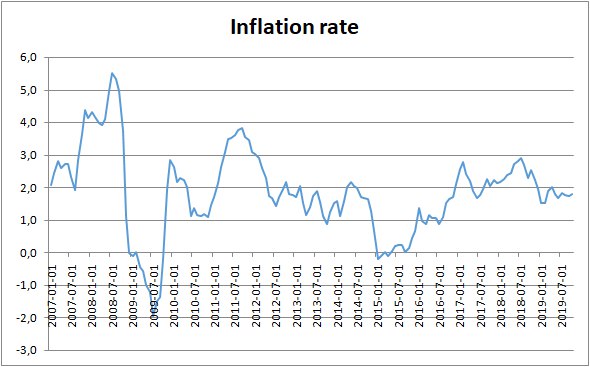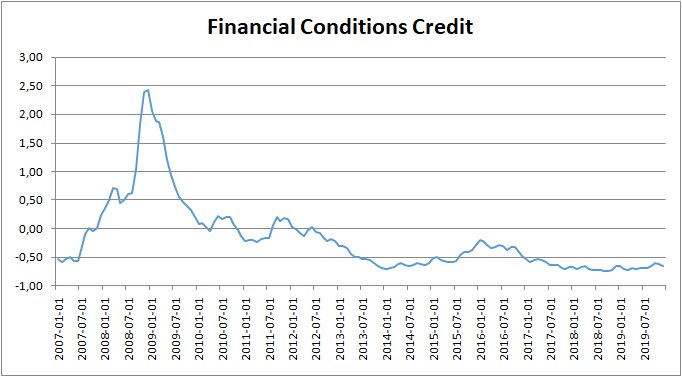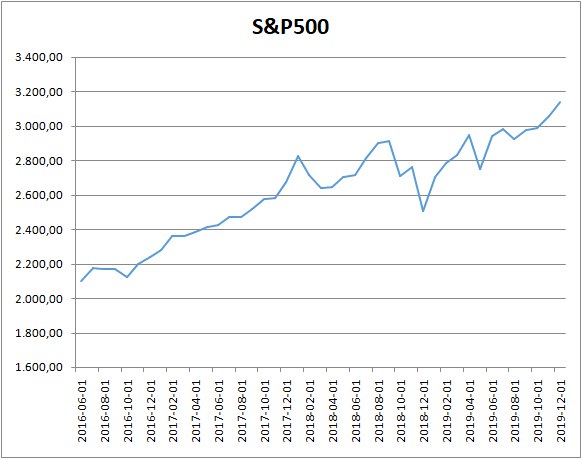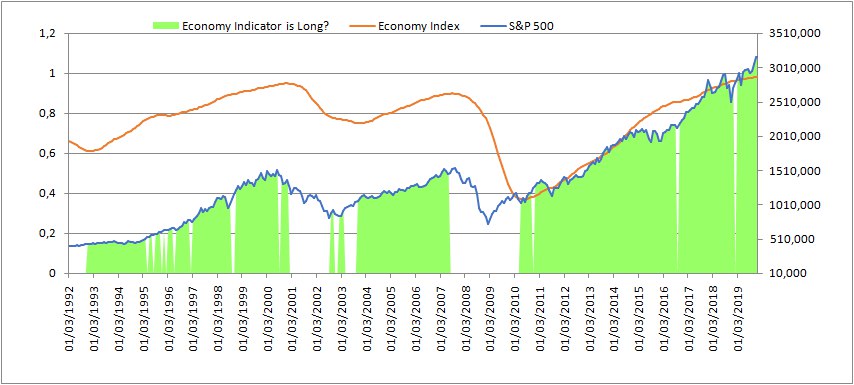Let's take a look at the general situation of the US economy by the end of Nov 2019.
You know, in the long-term (and we are long term investor) it is the economy that drives the markets behavior.
There are mixed signals (as most of the times), but the chances of a recession starting during Q1 and Q2 of 2020 are few. Let's see why.
Inflation is very low and stable, which means that productivity is succeeding in offering new goods/services to increasing demand by population. This is very healthy. If inflation is rising it means that people are consuming more than economy can supply
See how inflation rose and peaked jest before the crisis of 2008:

Companies are doing quite fine. The manufacturing ISM is not brilliant, but not bad.
And companies can still find credit loans easily, which is good for investments

See how last recession (2008-2009) boosted the difficulty in getting money by companies, creating a vitious circle: recession-lack of credit-less investments-more recession
The Yield curve is not in a good shape: it inverted in Fall 2019, and now it is rising up back again. This is typical to happen before recessions, BUT:
- it could take years before a recession arrives
- everybody is looking at this curve and worring about (this also caused some of the drops of markets in Summer 2019) and the FED reacted promptly so far.
So let's see how it goes in future months before panic.

Conclusions:
1. at a wide look, the US economy is still strong and no recession is likely in short term
2. markets fall sharply when ther is a recession, but markets can always drop when valuation of companies are getting too high compared to their "real" value.
This is probably what happened in late 2018: prices (= level of indexes) went too far high, and they returned to a more reasonable level

The HST model is designed to respond to these smaller drops after a while, but it is stronger in avoiding the big drops happening during recessions / bear markets.

